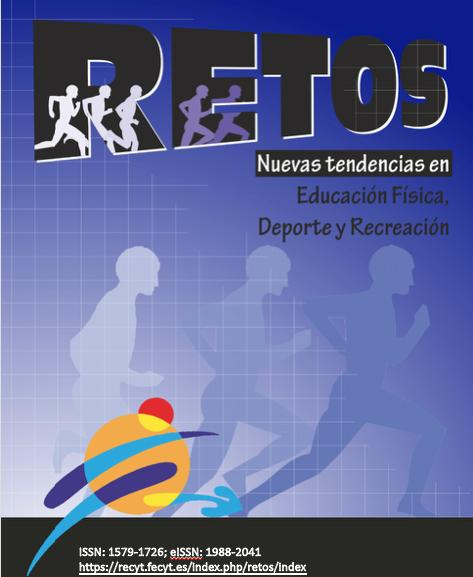Impact of Physical Characteristics on Academic Performance: A Quantitative Analysis of the Correlations between Body Mass Index and Waist-to-Hip Ratio in Chilean University Students.
DOI:
https://doi.org/10.47197/retos.v68.110790Keywords:
Índice de Masa Corporal (IMC, Relación Cintura-Cadera (ICC, Rendimiento Académico, Salud EstudiantilAbstract
This study investigates the correlation between physical characteristics, such as Body Mass Index (BMI) and Waist-to-Hip Ratio (WHR), and academic performance in a sample of university students. Using a quantitative approach, data collected from a large database of university students were analyzed, employing statistical techniques to assess correlations and mean differences. The findings reveal that a high BMI, indicative of overweight or obesity, and a high WHR, reflecting a greater accumulation of abdominal fat, are associated with decreased academic performance. These physical measures correlate with metabolic risks that could negatively influence cognitive ability and, consequently, academic performance. However, the results also suggest that the impact of physical health varies by context and is not universally direct or significant in all cases. It is recommended that educational institutions integrate health and wellness programs into their curricula and student services, promoting healthy habits that could improve both physical health and academic outcomes. This holistic approach, combining physical health and academic performance, is essential for student success. This study not only contributes to the understanding of how physical characteristics affect academic performance, but also highlights the importance of educational interventions that promote better physical well-being as part of a comprehensive strategy to improve academic success.
References
Bowers, A. W., & Jensen, K. (2018). Obesity and academic achievement: A meta-analysis. Obesity Reviews, 19(12), 1422-1437. https://doi.org/10.1111/obr.12703
Després, J.-P., Lemieux, I., & Bergeron, J. (2001). Abdominal obesity and metabolic syndrome. Nature, 409(6818), 763-770. https://doi.org/10.1038/35055575
Johnson, S. B., Cohen, P., Kasen, S., & & Brook, J. S. (2014). The role of nutrition in academic performance and cognitive function: A review. Journal of School Health, 84(1), 40-48.
Kotecha, M. M., Ghosh, S., & & Sinha, S. (2016). The influence of physical health on academic performance in higher education. Journal of Higher Education Research, 24(2), 113-125.
Krotkiewski, M., Bjorntorp, P., & & Sjöström, L. (1983). Impact of obesity and its distribution on the prevalence of diabetes mellitus. The New England Journal of Medicine, 308(10), 639-643.
Männistö, S. e. (2010). Waist circumference and waist-to-hip ratio as predictors of cardiovascular disease mortality: A review. American Journal of Epidemiology, 171(3), 278-292.
Must, A., Spadano, J., Coakley, E. H., Field, A. E., Colditz, G., & Dietz, W. H. (2012). The disease burden associated with overweight and obesity. JAMA, 282(16), 1523-1529. https://doi.org/10.1001/jama.282.16.1523
Organization, W. H. (2000). Obesity: Preventing and managing the global epidemic.
Singh, A. S., Mulder, C., Twisk, J. W., van Mechelen, W., & & Chinapaw, M. J. (2010). Tracking of childhood overweight into adulthood: A systematic review of the literature. Obesity Reviews, 11(5), 275-284.
Downloads
Published
How to Cite
Issue
Section
License
Copyright (c) 2025 Alexis Matheu, Gabriel Ignacio Rivera Cáceres, Martin Camilo Caro Rubio, Eduardo Andrés Ramírez Yáñez , Alejandro Israel Osorio Vivallo, Diego Alejandro Valdivia Llanos, Dany Patricio Cáceres Diaz, Marcelo Muñoz Lara, Bastián Gutiérrez

This work is licensed under a Creative Commons Attribution-NonCommercial-NoDerivatives 4.0 International License.
Authors who publish with this journal agree to the following terms:
- Authors retain copyright and ensure the magazine the right to be the first publication of the work as licensed under a Creative Commons Attribution License that allows others to share the work with an acknowledgment of authorship of the work and the initial publication in this magazine.
- Authors can establish separate additional agreements for non-exclusive distribution of the version of the work published in the journal (eg, to an institutional repository or publish it in a book), with an acknowledgment of its initial publication in this journal.
- Is allowed and authors are encouraged to disseminate their work electronically (eg, in institutional repositories or on their own website) prior to and during the submission process, as it can lead to productive exchanges, as well as to a subpoena more Early and more of published work (See The Effect of Open Access) (in English).
This journal provides immediate open access to its content (BOAI, http://legacy.earlham.edu/~peters/fos/boaifaq.htm#openaccess) on the principle that making research freely available to the public supports a greater global exchange of knowledge. The authors may download the papers from the journal website, or will be provided with the PDF version of the article via e-mail.


